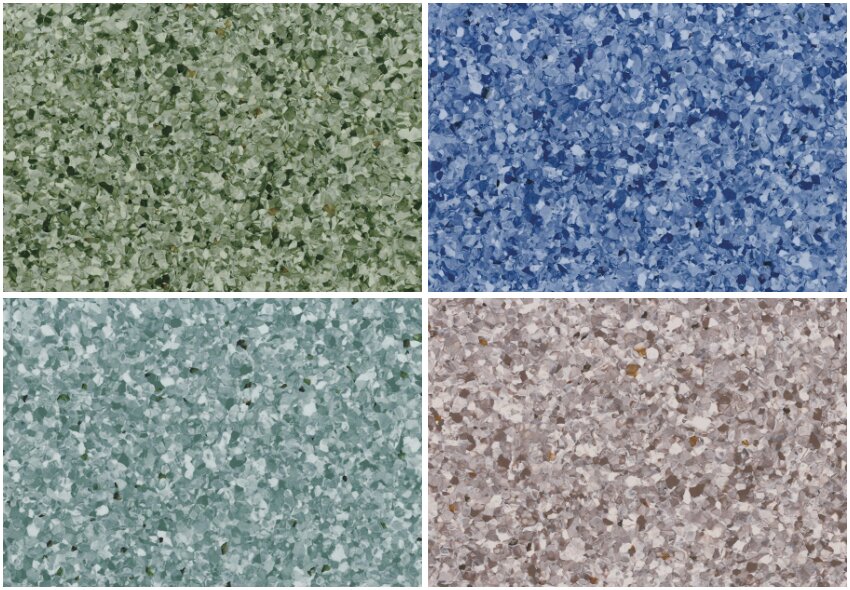
Homogeneous flooring is a versatile and durable flooring solution that has gained popularity across various sectors due to its unique properties and aesthetic appeal. This type of flooring is made from a single layer of material, typically vinyl, which ensures that the design and color run consistently throughout the thickness of the product. This characteristic not only enhances its durability but also makes it an ideal choice for a wide range of applications. In this article, we will explore the various applications of homogeneous flooring, highlighting its benefits and suitability for different environments.

One of the most significant applications of homogeneous flooring is in healthcare facilities, including hospitals, clinics, and nursing homes. The flooring in these environments must meet stringent hygiene standards, and homogeneous flooring excels in this regard. Its seamless surface minimizes the accumulation of dirt and bacteria, making it easier to clean and maintain. Additionally, many homogeneous flooring options are resistant to stains and chemicals, which is crucial in medical settings where spills are common.
Moreover, the comfort and safety of patients and staff are paramount in healthcare environments. Homogeneous flooring provides excellent slip resistance, reducing the risk of falls, which is particularly important in areas such as patient rooms, corridors, and operating theaters. The availability of various colors and designs also allows for the creation of calming and welcoming environments, which can positively impact patient recovery.
Schools and universities are another sector where homogeneous flooring is widely applied. Classrooms, hallways, and gymnasiums benefit from the durability and ease of maintenance that this flooring offers. The high foot traffic in educational institutions requires a flooring solution that can withstand wear and tear while maintaining its appearance over time.
Homogeneous flooring is also an excellent choice for creating engaging learning environments. With a variety of colors and patterns available, schools can design spaces that stimulate creativity and enhance the learning experience. Furthermore, the acoustic properties of some homogeneous flooring options can help reduce noise levels, creating a more conducive atmosphere for studying and teaching.
In the commercial sector, homogeneous flooring is increasingly being used in retail stores, offices, and hospitality venues. The aesthetic versatility of this flooring allows businesses to create unique and inviting spaces that reflect their brand identity. Retailers, for instance, can choose from a wide range of colors and designs to create an appealing shopping environment that attracts customers.
Additionally, homogeneous flooring is known for its durability, making it an ideal choice for high-traffic areas. It can withstand heavy foot traffic, rolling loads, and the wear and tear associated with daily operations. This durability translates to lower maintenance costs and a longer lifespan, making it a cost-effective flooring solution for businesses.
Homogeneous flooring is also suitable for industrial applications, including manufacturing facilities, warehouses, and distribution centers. In these environments, the flooring must be able to withstand heavy machinery, spills, and chemical exposure. Homogeneous flooring is designed to be resilient, providing a robust surface that can handle the demands of industrial operations.
Moreover, the seamless nature of homogeneous flooring reduces the risk of tripping hazards, which is crucial in busy industrial settings. The ease of cleaning and maintenance is another advantage, as spills can be quickly addressed without the worry of damaging the flooring. This makes homogeneous flooring a practical choice for industries that prioritize safety and efficiency.
While homogeneous flooring is often associated with commercial and industrial applications, it is also gaining traction in residential spaces. Homeowners are increasingly recognizing the benefits of this flooring type, particularly in areas such as kitchens, bathrooms, and entryways. The water-resistant properties of homogeneous flooring make it an excellent choice for spaces prone to moisture, while its durability ensures that it can withstand the rigors of daily life.
In addition to its practical benefits, homogeneous flooring offers a wide range of design options that can complement any home decor. From sleek and modern to warm and traditional, homeowners can find a style that suits their aesthetic preferences. The ease of installation and maintenance further enhances its appeal for residential use.
Homogeneous flooring is a versatile and durable flooring solution that finds applications across various sectors, including healthcare, education, commercial spaces, industrial environments, and residential areas. Its unique properties, such as seamless design, ease of maintenance, and aesthetic versatility, make it an ideal choice for a wide range of applications. As industries continue to prioritize hygiene, safety, and design, the demand for homogeneous flooring is likely to grow, solidifying its place as a preferred flooring solution in the modern world. Whether in a bustling hospital, a vibrant school, a stylish retail store, or a cozy home, homogeneous flooring proves to be a reliable and attractive choice for any environment.